Rhinoceros
Learn about rhinos, how the BioPark works with these large horned animals, and learn to make a rhino craft!
Goal
To learn more about rhinoceros and all of their senses for survival.
Introduction to Animal
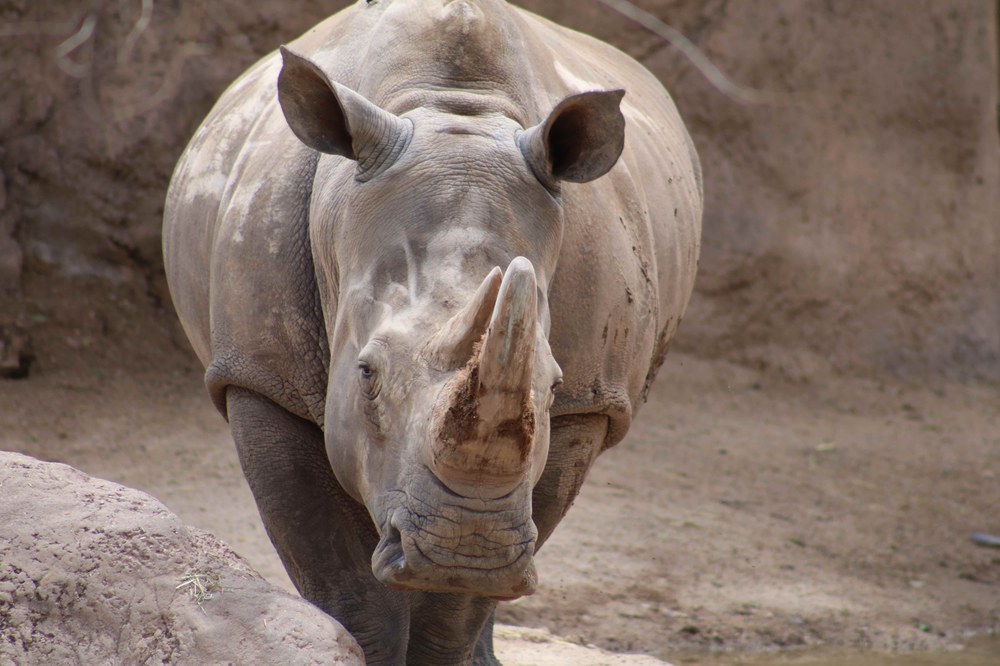
Rhinoceros can weigh more than 2,000 pounds and have a thick skin that is used to protect them in their harsh habitats. The most defining feature of a rhinoceroses is their horn, which is how they got their name. The word rhinoceros originally comes from the Greek language, rhino meaning nose and ceros meaning horn. There are five species of rhinoceros that live across Africa and Eurasia: white rhino, black rhino, Sumatran rhino, Javan rhino and the greater one horned rhino. All of these species have either one or two large heavy horns on their face right above their nose. Their horns are made out of a hard, densely packed protein called keratin (humans have keratin in their fingernails). Rhinos use their horns to dig up plants and roots to eat and to protect themselves from predators.
While these animals are built as solidly as a tank, they spend most of their time lazily moving about, rolling around in mud and eating large quantities of grasses and other plants. Rhinos have notoriously bad eyesight and will often charge at anything that startles them, so don’t let their slow lumbering movements fool you! Rhinos live together in herds; a group of rhinos is appropriately called a “crash” because they will go through just about anything that’s standing in their way.
Rhinos at the BioPark
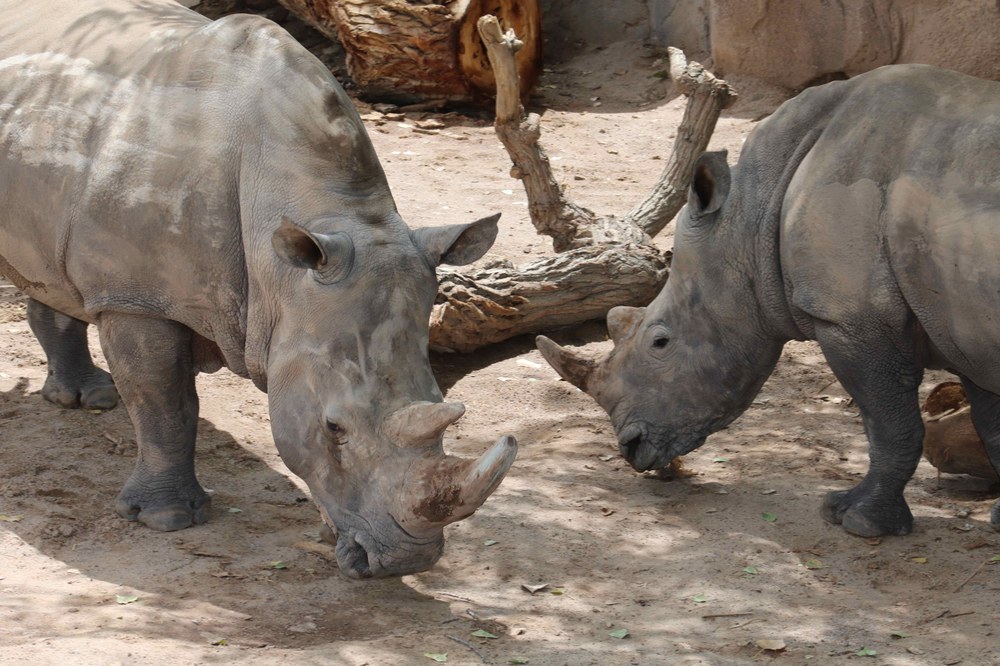
Here at the BioPark we help rhinos by providing excellent care to the Southern white rhinos that live here, Bertha and Chopper. Bertha and Chopper have an incredibly important role in conservation and in protecting their own species by serving as ambassadors here in New Mexico for rhinos all over the world! Bertha and Chopper might not know it, but they are amazing teachers for us humans. They help us learn about the importance of rhinos so we can all work together to protect rhinos living in the wild.
If you want to know more about the backstory of Bertha and Chopper and get the inside-scoop on what it is like to work with them every day, you can check out our rhino-keeper interview.
Rhinos share their habitat with a lot of different animals and plants and they play an important role in the ecosystem. As these large animals walk around they are moving lots of soil, seeds and pooping -- this puts lots of important nutrients back into the ground. If rhinos were to disappear from their habitat, some plants and animals wouldn’t be able to survive there anymore either.
Rhino Conservation
These huge, grass-eating mammals are one of the most endangered animals in the world. The reason these animals are in danger is mainly because of habitat loss and poaching. Poaching is when someone hunts an animal without a license, which is illegal. Just like how you can’t drive a car without a driver’s license, you can’t hunt an animal without a hunting license. Most people who are poaching rhinos do it for their horns under the belief that the horn is medicine for humans. Rhino horns aren’t medicinal though and the only animal that needs a rhino horn is a rhino. There are now intensive efforts being made in Africa and Asia to help rhinos survive through laws being put in place to protect them and the creation of wildlife sanctuaries for them to live. You can help rhinos all over the world by learning more about them, helping to educate people and visiting your ABQ BioPark.
Rhino Activity: Creating a Rhino Horn
In this activity, we will be creating our very own “rhino horns” and exploring how a rhinoceros uses their horn to help them survive.
We will also be looking at the five senses humans have and how a rhino’s five senses might be different than ours.
Lastly, we will challenge ourselves to explore our own “habitats” as a rhino and imagine what life would be like as one of these amazing animals.
Materials
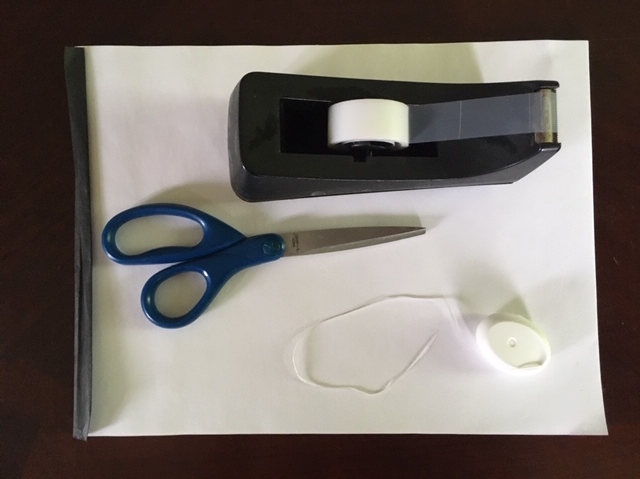
- One sheet of paper
- Scissors/hole puncher
- String (yarn, ribbon, even dental floss)
- Tape
Additional Possible Materials
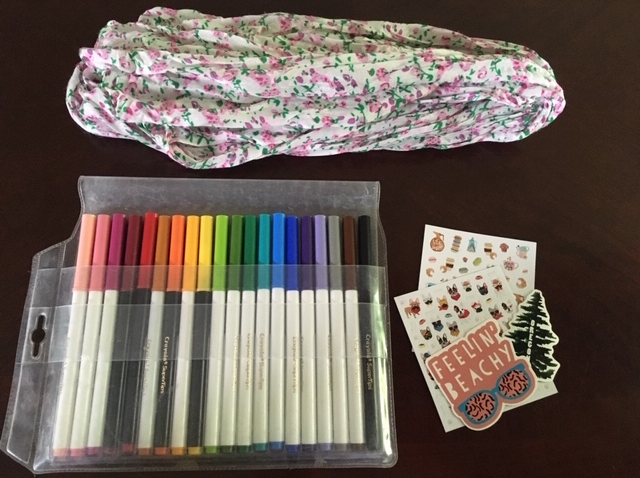
- Bandanna/scarf/headband to use as a blindfold
- Paint, crayons, markers, stickers, etc. to decorate
Activity Method
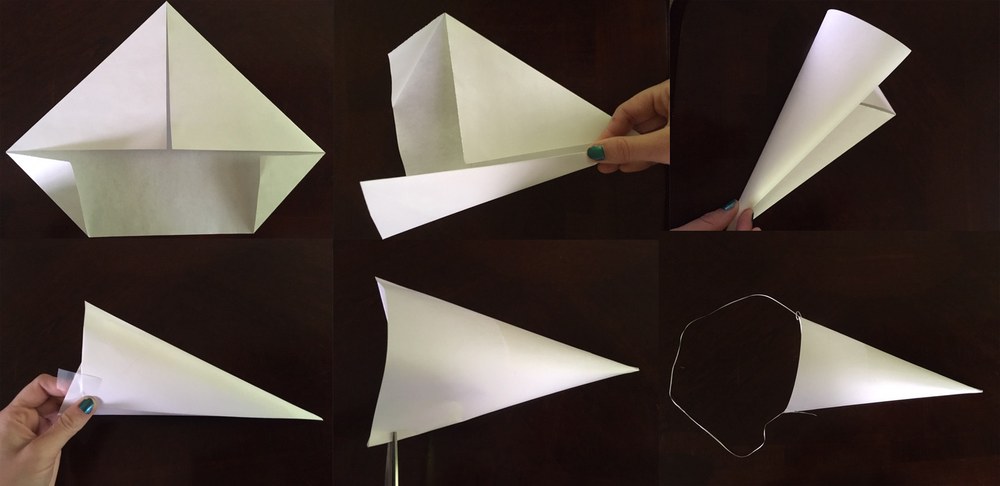
- Lay out your sheet of paper and fold the top two corners all the way in.
- Fold the bottom two corners partially in.
- If you want to decorate your “rhino horn” do so now before rolling paper.
- From the fold, roll the paper so it creates a cone. Use tape to fasten together.
- Measure string around the head of your “rhino” above the ears so it is the right size.
- Use scissors to cut small slits in the paper to attach the string, making a headband.
- Wear your rhino horn and imagine life as a rhino!
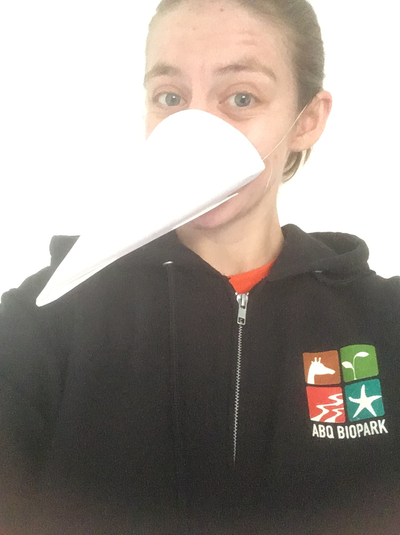
Once you are done creating your horn, you can immerse yourself in the world of a rhino!
- Sight: Squint your eyes or give yourself a blindfold in order to mimic the poor eyesight of a rhino. How might a rhino navigate without being able to see very well?
- Sound: Cup your hands around your ears to mimic the huge cup-like ears of a rhino. What can you hear? Could you hear more or less as a rhino?
- Touch: Get on all fours and slowly navigate around the room. Rhinos will charge unknown objects with their horn. You can “charge” a pillow, stuffed animal or other soft object.
- Taste: Collect together a pile of grass, leaves and sticks/twigs/branches. Imagine what it would be like to eat the diet of a rhino.
- Smell: Rhinos can smell from much further away than humans. What can you smell? How close do you have to be to smell something?
What was it like to be a rhino and have a rhino horn? Rhinos use their horns for many activities: digging, marking territory, intimidation, defense and even guiding their babies. How did you use your horn? How is being a rhino different than being a human?
Additional Rhino Resources
To keep on learning about rhinos, check out the links below!
